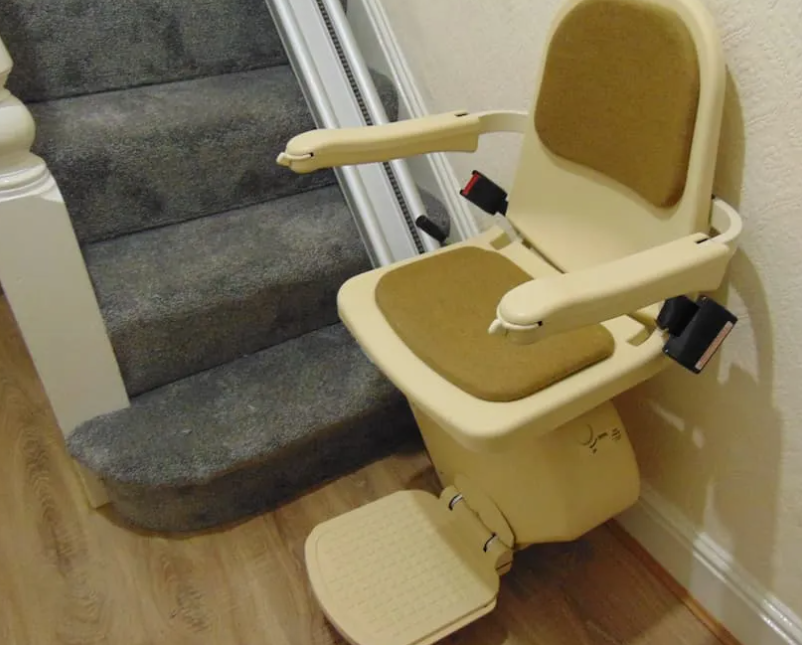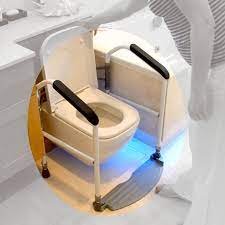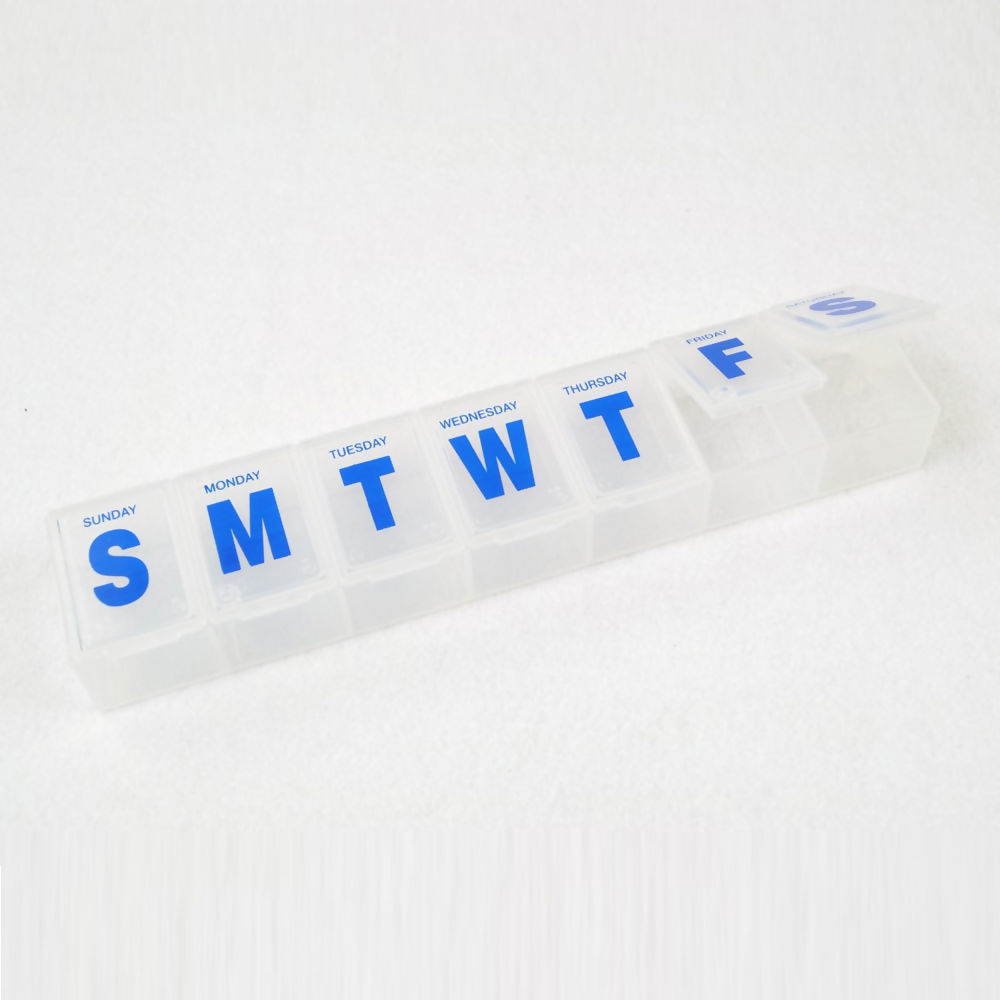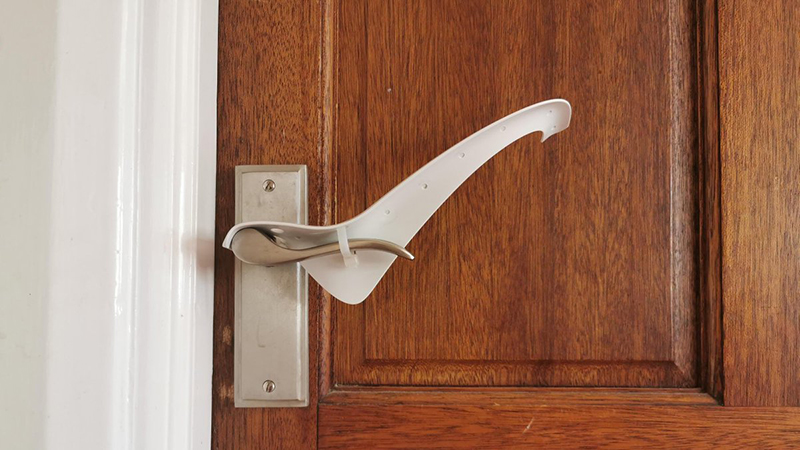As people age, their mobility and awareness can decline, so it is really important to make sure that their living environment is safe and comfortable. Accidents at home are common among older people, and taking a few simple steps can help to reduce the risks. As my parents and in-laws have aged, I’ve helped them with a few gagdets and simple home improvemnets to make them safer:
It’s a sad fact that according to The Royal Society for the Prevention of Accidents, people over the age of 65 account for 19% of the total number of A&E home accident attendances.
This post is all about giving you helpful tips to make homes safer for older people. This is especially important for those with memory problems like dementia. Let’s look at some easy ways to keep people safe and comfortable at home.
| Key Takeaways | Details |
|---|---|
| Preventing Falls | Use non-slip mats, secure loose carpets, and install handrails or grab bars in critical areas. Consider stairlifts for those with dementia to avoid stair-related risks. |
| Enhancing Lighting | Install bright lights and motion sensors, especially in hallways and staircases, to reduce fall risks and improve visibility for older people. |
| Bathroom Safety | Use raised toilet seats, shower chairs, and lever-style taps to reduce strain and prevent falls in the bathroom. |
| Fire and Carbon Monoxide Safety | Install smoke and carbon monoxide detectors. Keep fire extinguishers accessible and regularly check their condition. |
| Managing Medication | Use a pill organiser and set reminders to ensure proper medication management, reducing the risk of missed or incorrect doses. |
| Kitchen Safety Tips | Opt for auto shut-off appliances and organise items within easy reach to minimise hazards. |
| Improving Home Security | Install a doorbell camera and use simple, secure locks to help older people feel safe and prevent confusion. |
1. How to Prevent Falls
Falls are one of the leading causes of injury among the elderly. To minimise the risk of falls, it’s important to keep the home clutter-free and make sure that walkways are clear.
Here are some helpful tips:
- Use Non-Slip Mats – Place non-slip mats in areas that are often wet, such as the kitchen and bathroom. This can prevent slipping on wet floors.
- Secure Loose Carpets – Please make sure all rugs and carpets are firmly attached to the floor, or consider removing them altogether to avoid tripping hazards.
- Install Handrails and Grab Bars – Install handrails along staircases and grab bars in the bathroom, especially around the shower, bath, and toilet. These provide extra support for older people who may struggle with balance.

Furthermore, for those with dementia, stairlifts can be a lifesaver. Dementia often affects balance and spatial awareness, making stairs particularly dangerous. A stairlift offers a safe way to move between floors, removing the need for stair navigation altogether.
2. Improve Your Lighting
Adequate lighting is much more important for older people. As we age, our eyesight gets worse, and poor lighting increases the risk of falls and accidents.
- Use Bright Lights – Install brighter bulbs, especially in hallways, staircases, and entryways. All rooms need to be well-lit, particularly during the night when there is no helpful daylight.
- Install Motion Sensors – Motion sensor lights are very practical for older people, especially at night. These lights automatically turn on when movement is detected, making it easier for people to get around without searching for light switches. If installed with a timer they can also help save energy by turning off lights when someone has left the room.
- Automated Lighting Schedules: Utilise smart lighting systems to set automated schedules that adjust brightness and colour temperature based on the time of day. This enhances visibility and reduces eye strain, especially in dimly lit areas.
- Outdoor Lighting: Ensure that all outdoor areas, such as pathways, driveways, and porches, are well-lit to reduce the risk of trips and falls. Motion-activated lights can also add an extra layer of safety.
- Safe Outdoor Spaces: Remove any hazards like loose stones or uneven paving. Install handrails along outdoor steps or sloping paths to provide additional support and stability.
3. What About Bathroom Safety?
The bathroom is one of the most dangerous areas for elderly people, as the combination of water and slippery surfaces increases the likelihood of falls.
- Install a Raised Toilet Seat – A raised toilet seat can make it easier for older people to sit down and stand up, reducing the strain on their joints and muscles.
- Adding a toilet frame can help to make it easier to sit down on and get up from the toilet.

- Use a Shower Chair or Bath board – For those who struggle with standing for long periods, a shower chair can provide support. It allows older individuals to sit while washing, making the process safer and more comfortable. Similarly a bathboard can be added so that you can sit safely in a bath.
- Opt for Lever-Style Taps – Replacing twist taps with lever-style ones can make it easier for older people, particularly those with arthritis, to turn the water on and off.
4. Fire and Carbon Monoxide Safety
Older people may be more vulnerable in the event of a fire or carbon monoxide leak. It’s important to assure that the home is equipped with safety devices that can prevent a serious incident.
- Install Smoke and Carbon Monoxide Detectors – Make sure that both smoke alarms and carbon monoxide detectors are installed in key areas of the home. Test them regularly and replace batteries as needed.
- Keep Fire Extinguishers Accessible – Have fire extinguishers readily available in the kitchen and other high-risk areas. Make sure they are in good working condition, and if possible, get them tested regulary.
5. Keeping on track with Medicines – every day and at the right time
For people who take multiple medications, keeping track of the correct doses can be difficult. It’s easy to forget to take your medicines or even remember if you have already taken them that day! Mismanaging medication can have serious health consequences, so it’s crucial to make the process as simple as possible.
- Use a Pill Organiser – A pill organiser with compartments for each day of the week can help, you know if you have taken them because they are not in their compartment! They can be organised weekly or monthly, some people appreciate a hand with this regulary.
- Set Reminders – Whether it’s a phone alarm or a simple written note, reminders can help guarantee that medication is taken at the right time.

6. Your Kitchen Safety
The kitchen can be a dangerous place for older people, especially for those with memory problems like dementia. They might forget to turn off the stove or leave a pot cooking for too long.
- Use Appliances with Auto Shut-Off – Appliances such as kettles, toasters, and stoves with automatic shut-off features can prevent accidents as no one needs to remember to turn them off.
- Organise Items for Easy Access – Store frequently used items, like plates and utensils, in lower cupboards to avoid the need for stretching or climbing onto stools to reach things.
- Buy simple gadgets like multi openers and non-slip table mats to improve safety
- Ergonomic Handles: Replace traditional door handles with ergonomic designs, such as lever handles, that are easier to grip and turn. This simple change can prevent strain and improve ease of access. The Tru-grip door handle extension can help to make doors easier to open and is easy to fit.

7. Home Security in General
It is important that older people feel safe and comfortable in their homes, not just free from accidents. Feeling safe helps them relax and enjoy their space. Here are some ways to help:
- Install a Doorbell Camera – A doorbell camera allows you to see who is at the door before answering, offering peace of mind.
- Use Simple Locks – Easy-to-use locks on doors and windows can help older people feel more secure without causing confusion or difficulty.
- Consider a personal alarm for instant access to talk to a relative or emergency service during a crisis.
- Large Button Phones: Provide phones with large, easy-to-press buttons and clear displays. These are beneficial for people with visual impairments or limited dexterity, making communication safer and easier in an emergency.
8. Voice-Controlled Devices for Home Safety and Comfort
What It Is:
Voice-controlled devices like smart speakers with virtual assistants (for example, Alexa or Google Assistant) respond to simple spoken commands.
How It Helps:
- Hands-Free Control: Older people can use their voice to control lights, heating, and security systems. This means they don’t need to get up or reach for switches, reducing the risk of falls.
- Convenience and Comfort: With just a voice command, they can adjust the room temperature or lock the front door without moving around.
Extra Benefits:
- Easy Access to Music and Books: Devices like Alexa can play music or talking books (audiobooks) on request, offering entertainment and comfort. Services like the RNIB Talking Books scheme offers free audio books to visually impaired people, and are accessible through Alexa.
- Staying Connected: These devices can also be used to call family or friends with a simple voice command. This helps reduce feelings of loneliness and makes it easier for older people to stay in touch. Helping older people stay connected with friends and family is crucial for mental well-being, particularly for those who live alone.
Tip:
Set up favorite music playlists or add contacts to the call list, so your loved one can easily use these features. This can make their day more enjoyable and help them feel more connected.
A Safer Home All-Round
With these simple yet effective changes, the home can become a much safer place for older people. Whether through better lighting, preventing falls, or installing helpful devices like stairlifts for those with dementia, creating a secure environment promotes independence while reducing the risks associated with ageing.
About the Author: Duncan Edwards
As someone who has personally adapted a home for older relatives, I know firsthand the importance of creating a safe and supportive environment. Having navigated everything from mobility aids to ensuring medication routines are simple,I have personal experience of making a home safer and easier to live in. My work with the Disability Horizons Shop has involved sourcing accessible products, and I’ve supported families facing similar challenges. Collaborating with carers and health professionals, I bring a practical, hands-on approach to making homes safer for our older loved ones. This article reflects my commitment to enhancing independence and well-being for everyone as they age.
